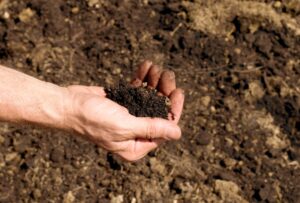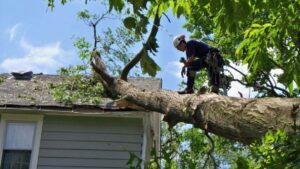Tree Removal Cleanup: A Comprehensive Guide
Tree removal is just the first step in clearing your landscape; the cleanup process is equally important to ensure your yard is safe, tidy, and ready for new projects. Effective tree removal cleanup involves dealing with branches, trunks, stumps, and debris that can clutter your space and pose hazards. This guide will walk you through the essential steps, techniques, and tips for thorough tree removal cleanup, helping you restore order and prepare your yard for future landscaping.
1. Importance of Tree Removal Cleanup
Tree removal cleanup is a critical phase that ensures your landscape remains functional and safe after a tree has been cut down. Proper cleanup not only improves the appearance of your yard but also prevents potential hazards and promotes the health of your remaining plants.
Key Reasons for Cleanup:
- Safety: Leftover branches, logs, and debris can be tripping hazards and breeding grounds for pests.
- Aesthetic Appeal: A clean yard looks more appealing and can enhance the overall value of your property.
- Preparation for Future Landscaping: Clearing debris allows you to plan and execute new landscaping projects without obstructions.
Benefits of a Thorough Cleanup:
- Reduces the risk of injury from sharp branches or unstable logs.
- Prevents the spread of diseases and pests from decaying wood.
- Enhances soil quality by removing unwanted materials that can hinder plant growth.
Table: Pros and Cons of Tree Removal Cleanup
| Aspect | Pros | Cons |
|---|---|---|
| Safety | Eliminates hazards from fallen debris | Can be time-consuming and labor-intensive |
| Aesthetic Improvement | Enhances the look of the landscape | May require specialized equipment |
| Pest Control | Reduces breeding grounds for insects | Disposal of large logs can be challenging |
| Preparation for Landscaping | Clears the area for new projects | Potential costs for professional services |
2. Tools and Equipment for Tree Removal Cleanup
Having the right tools and equipment is crucial for efficient tree removal cleanup. The size and scope of the tree will dictate the type of tools you’ll need, from basic yard tools to more specialized machinery.
Essential Tools for Cleanup:
- Chainsaw: For cutting larger branches and trunks into manageable pieces.
- Pruning Shears and Loppers: Ideal for smaller branches and detailed work.
- Rake and Leaf Blower: For clearing smaller debris like leaves and twigs.
- Wheelbarrow or Yard Cart: To transport debris to disposal areas.
- Wood Chipper: For converting branches and smaller logs into mulch.
- Stump Grinder: To deal with stumps left behind after tree removal.
Additional Safety Gear:
- Gloves: Protects hands from splinters, thorns, and rough surfaces.
- Safety Glasses: Shields eyes from flying debris.
- Hearing Protection: Essential when using loud equipment like chainsaws and chippers.
- Steel-Toed Boots: Provides foot protection from heavy logs and sharp tools.
Table: Essential Cleanup Tools and Their Uses
| Tool | Purpose | Safety Tips |
|---|---|---|
| Chainsaw | Cutting trunks and large branches | Keep both hands on the saw and maintain balance |
| Pruning Shears | Trimming small branches | Wear gloves to avoid cuts |
| Rake | Gathering leaves and small debris | Use ergonomic tools to prevent strain |
| Wood Chipper | Creating mulch from branches | Wear safety glasses and keep hands clear |
| Stump Grinder | Removing tree stumps | Follow manufacturer instructions carefully |
3. Debris Management and Disposal Options
Managing and disposing of debris effectively is a significant part of the cleanup process. Depending on the amount and type of debris, there are several options available for disposal.
Disposal Methods:
- Curbside Pickup: Many municipalities offer yard waste pickup services. Check local regulations for size and bundling requirements.
- Composting: Smaller branches, leaves, and twigs can be composted to create nutrient-rich soil.
- Wood Chipping: Use a wood chipper to turn branches into mulch, which can be used in garden beds or as ground cover.
- Recycling Centers: Some recycling centers accept wood waste, especially if it’s free of chemicals or paint.
- Burning: In some areas, burning is permitted, but always check local laws and regulations regarding open fires.
Bullet Points for Effective Debris Management:
- Sort debris into piles: branches, leaves, logs, and smaller brush.
- Use biodegradable bags for leaves and smaller organic materials.
- Coordinate with neighbors for shared disposal or rental of larger equipment like wood chippers.
Comparison Table: Debris Disposal Methods
| Method | Best For | Pros | Cons |
|---|---|---|---|
| Curbside Pickup | Small to medium-sized branches | Convenient, part of regular waste services | May have restrictions on size and type |
| Composting | Leaves, small twigs | Eco-friendly, enriches soil | Time-consuming, not suitable for large debris |
| Wood Chipping | Branches, small logs | Recycles material into useful mulch | Requires equipment rental or purchase |
| Recycling Centers | Larger logs, untreated wood | Environmentally responsible | May require transport of materials |
| Burning | Dry, untreated wood | Quick disposal method | Legal restrictions, environmental concerns |
4. Stump Removal Techniques
Dealing with the tree stump is often one of the most challenging aspects of tree removal cleanup. Stumps can be unsightly and interfere with future landscaping projects, so choosing the right removal method is crucial.
Common Stump Removal Methods:
- Stump Grinding: A stump grinder can reduce the stump to below ground level, making it easy to cover with soil or grass.
- Manual Removal: For smaller stumps, digging around the roots and cutting them out manually can be effective.
- Chemical Stump Removers: These products accelerate the decomposition of the stump, making it easier to remove over time.
- Burning: In areas where it’s permitted, stumps can be burned out using specialized equipment and techniques.
Steps for Stump Grinding:
- Prepare the Area: Clear any rocks or debris around the stump.
- Grind Slowly: Start with the stump grinder and gradually grind down below the surface.
- Backfill: Fill the hole with soil or mulch to level the ground.
Safety Tips:
- Always wear protective gear, including gloves, glasses, and hearing protection.
- Follow the manufacturer’s instructions for operating stump grinders or using chemical removers.
Comparison Table: Stump Removal Techniques
| Technique | Best For | Pros | Cons |
|---|---|---|---|
| Stump Grinding | Most stumps, all sizes | Quick, effective | Equipment rental can be costly |
| Manual Removal | Small stumps, shallow roots | Low cost, immediate | Labor-intensive, time-consuming |
| Chemical Removers | Older, decaying stumps | Minimal labor, gradual process | Slow, chemicals can affect soil health |
| Burning | Dry, isolated stumps | Quick, complete removal | Legal restrictions, risk of uncontrolled fire |
5. Recycling and Repurposing Tree Debris
Recycling and repurposing tree debris not only help reduce waste but also provide useful materials for your landscape or home projects. From mulch to firewood, there are several ways to make the most of your tree remnants.
Ways to Repurpose Tree Debris:
- Mulch Creation: Use a wood chipper to turn branches into mulch for garden beds and pathways. Mulch helps retain soil moisture and suppress weeds.
- Firewood: Larger logs can be cut and split into firewood for use in fireplaces, wood stoves, or outdoor fire pits.
- Garden Edging: Logs and larger branches can be used as natural edging for garden beds or pathways.
- Craft Projects: Smaller branches and logs can be used for DIY projects like birdhouses, rustic furniture, or garden decorations.
Environmental Benefits:
- Reduces landfill waste.
- Provides a sustainable source of materials.
- Enhances soil health when used as mulch.
Bullet Points for Repurposing:
- Dry wood properly before using as firewood to prevent smoke and creosote buildup.
- Use untreated, chemical-free wood for mulch and garden applications.
- Get creative with natural log seating or plant stands to add a rustic touch to your landscape.
6. Professional vs. DIY Cleanup: Cost and Efficiency
Deciding whether to tackle tree removal cleanup yourself or hire professionals depends on the size of the job, the tools you have available, and your comfort level with the work involved. Understanding the cost and efficiency of each option can help you make an informed decision.
DIY Cleanup:
- Cost: Generally cheaper as it eliminates labor costs. Expenses include tool rental or purchase and disposal fees.
- Efficiency: Can be time-consuming, especially for large trees or multiple stumps.
- Skill Level Required: Requires basic knowledge of tools and safety practices.
Professional Cleanup:
- Cost: Higher due to labor, equipment, and expertise.
- Efficiency: Faster and often more thorough, as professionals have the right tools and experience.
- Additional Services: Many services include stump grinding, debris hauling, and site grading.
Here’s a table comparing DIY vs. Professional Tree Removal Cleanup:
| Aspect | DIY Cleanup | Professional Cleanup |
|---|---|---|
| Cost | Lower, tool rental costs apply | Higher, includes labor and equipment fees |
| Time | Longer, based on personal availability | Faster, often completed in a day or two |
| Tools Required | Personal tools or rentals needed | All tools provided by service |
| Skill and Safety | Requires basic to advanced skills | Handled by trained professionals |
| Quality of Cleanup | Variable, based on personal effort | Consistent, thorough, and efficient |
7. Final Touches and Site Restoration
After the major cleanup is complete, it’s time to focus on the final touches to restore your landscape to its best condition. This step ensures that your yard is not only clean but also ready for whatever new landscaping plans you have.
Final Touches:
- Soil Leveling: Use soil to fill in any holes left by stump grinding or tree removal to prevent pooling and create a smooth surface.
- Seeding or Sodding: Plant grass seeds or lay sod over bare spots to restore your lawn.
- Mulching: Apply mulch around remaining trees and garden beds to maintain moisture and improve appearance.
- Weed Control: Remove any weeds that may have sprouted in disturbed areas and consider adding a weed barrier.
Site Restoration Tips:
- Water new grass or sod regularly to encourage growth.
- Monitor the area for any signs of pest infestation or disease in remaining plants.
- Plan for replanting if the removed tree was a significant landscape feature—consider replacing it with a smaller, more manageable species.
FAQs About Tree Removal Cleanup
- What is the best way to dispose of tree debris after removal?
The best disposal method depends on the type and amount of debris. For smaller branches and leaves, composting or curbside pickup is effective. Larger logs can be repurposed as firewood or taken to recycling centers. Wood chippers are ideal for creating mulch from branches. - Can I leave the stump after tree removal?
Yes, you can leave the stump, but it may cause issues such as attracting pests, becoming a tripping hazard, or interfering with future landscaping. Stump grinding or removal is recommended to prevent these problems and create a smooth, usable space. - Is it cheaper to do the tree removal cleanup myself or hire a professional?
DIY cleanup is usually cheaper as it saves on labor costs. However, it can be time-consuming and requires renting or purchasing equipment. Professional services, while more expensive, offer speed, expertise, and thorough cleanup, often including stump grinding and debris removal. - What should I do with the wood from the removed tree?
The wood can be repurposed in various ways, such as cutting it into firewood, using it for DIY projects, or converting it into mulch with a wood chipper. Ensure the wood is properly dried if used for firewood to prevent smoke and creosote buildup. - How can I ensure safety during the cleanup process?
Always wear appropriate safety gear, including gloves, safety glasses, and sturdy boots. Use tools according to manufacturer instructions, and keep children and pets away from the work area. For larger or more complex cleanups, consider hiring professionals to reduce the risk of injury. - What are the environmental considerations for tree removal cleanup?
Tree removal can impact the environment by reducing habitat and increasing erosion. To mitigate these effects, recycle or repurpose debris, replant with native species, and avoid chemicals that could harm the soil and surrounding plants. - How long does it take to clean up after tree removal?
The time required for cleanup depends on the size of the tree and the amount of debris. Small trees may take a few hours, while larger trees with extensive branching and stumps can take a day or more. Professional services can often expedite the process. - Do I need a permit for tree removal and cleanup?
Permit requirements vary by location. It’s essential to check with your local municipality or homeowner’s association to determine if a permit is necessary, especially for large or protected trees. Some areas also have regulations for disposing of tree debris. - What is stump grinding, and is it necessary?
Stump grinding is the process of using a machine to grind down the tree stump to below ground level. It’s not always necessary, but it helps eliminate tripping hazards, prevents pest infestations, and makes the area easier to landscape. - Can tree removal cleanup affect my property value?
Proper cleanup can positively impact property value by enhancing curb appeal and creating a safer, more attractive landscape. Conversely, leaving stumps, debris, or unkempt areas can detract from the property’s appearance and potentially lower its value.
Conclusion
Tree removal cleanup is an essential part of maintaining a safe, attractive, and functional landscape. From selecting the right tools and techniques to managing debris and restoring the site, each step plays a crucial role in achieving a successful cleanup. Whether you opt for DIY efforts or hire professionals, understanding the process ensures that your yard is left in great shape and ready for future landscaping endeavors. By recycling debris, removing stumps, and executing a thorough cleanup, you can turn a potentially overwhelming task into an opportunity to enhance your outdoor space.





